By all accounts, the conversion of the double-barrel Italian “Villar Perosa” pistol-caliber machine-gun of World War I era to a single-barrel, wooden-stocked shoulder-fired weapon marked the birth of the first moschetto automatico (lit. “automatic muskeet,” archaic Italian for “machine-carbine”), a category of firearms that would later become known as “submachine guns.” Around the same time, on the other side of the barricade, the Austrian Österreichische Waffenfabriks-Gesellschaft (ÖWG, better known as Steyr) converted the Steyr-Hahn 1912 pistol to selective fire into the world’s first machine pistol: the Repetierpistole M1912/P16 was a Steyr-Hahn with an extended 16-round magazine and a detachable shoulder holster that dubbed as a stock.
However, while the concept of a machine-pistol, machine-carbine, or submachine gun (SMG), flourished as the years went by, becoming a staple of military and police armament during and after World War II, the M1912/P16 went out of production with the end of World War I and the concept of machine-pistol languished, with a few notable exceptions such as the Mauser M.712 Schnellfeuer, a few Spanish select-fire pistol designs, and a couple of well-known prototype select-fire conversions of the M1911 from the US. Understandable, select-fire pistols were, and still are, well-known for their blistering high rate of fire, low controllability and accuracy, low capacity compared to their cyclic rate resulting in the depletion of an entire magazine after just one or two trigger pulls, and lackluster terminal ballistics on medium range due to their short barrel — a far cry from the lower rate-of-fire, higher controllability, better accuracy and performance of SMGs.
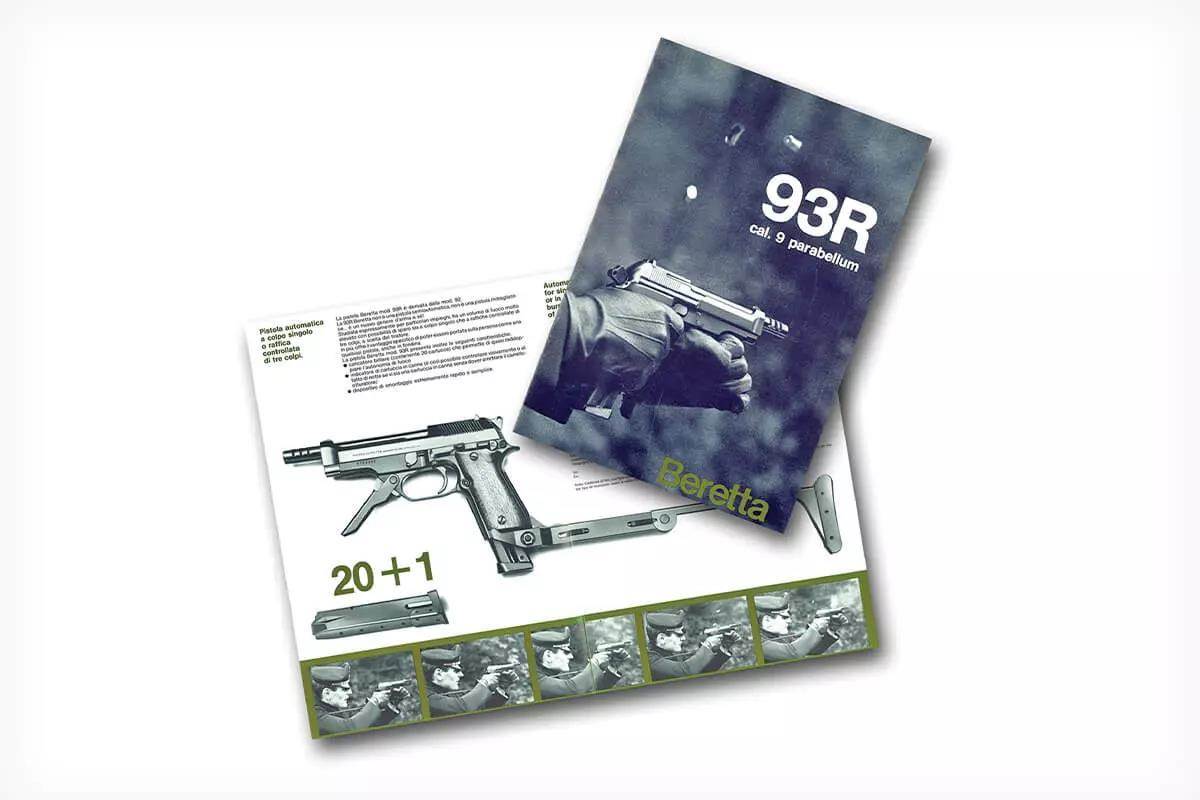
Nonetheless, the concept of machine-pistols saw a brief resurgence a few years after the World War II, on both sides of the Iron Curtain. The Soviet Army issued the Stechkin APS — a massive select-fire pistol with a wood-and-leather holster that could dub as a shoulder stock, firing the 9x18mm Makarov round and feeding from 18-rounds magazines. These were issued to armored vehicle crews, aircrews, officials, artillerymen, RPG-7 operators, and the like, until short versions of the Kalashnikov rifle such as the AKS-74U came to replace it with overall better results. On the western side, Steyr briefly proposed the Pi.18 select-fire pistol, whose semi-automatic version would be known as the GB, and Heckler & Koch attempted to market their VP70-M with very little success. Despite its cult status among gun enthusiasts, the Glock 18 didn’t enjoy a better acceptance either.
Smaller, Faster, Italian…
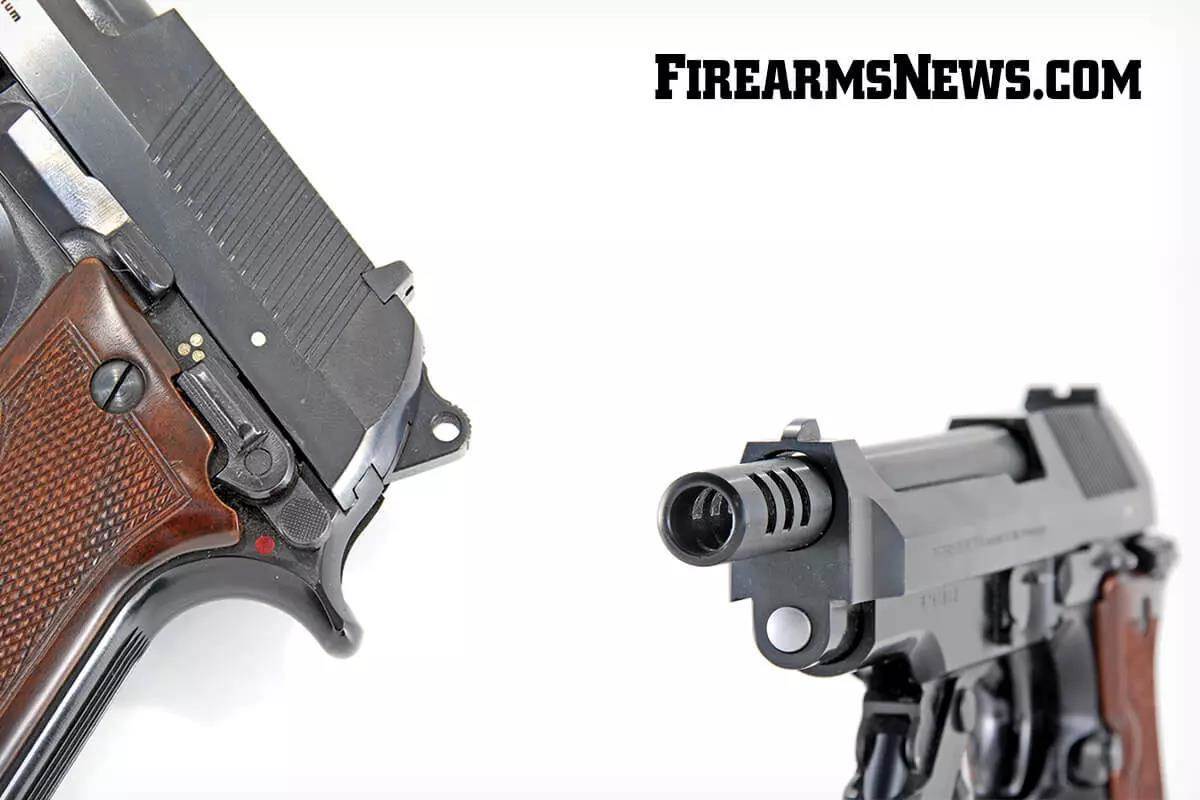
Italy itself had its run-ins with select-fire pistols immediately after World War II: the early 1950s in the city of Bologna saw Carlo Cuppini and Cesare Lercker manufacture about 150 samples of the now highly collectable Lercker automatic pistols in .25 ACP, and in the late 1960s, Beretta manufactured a small run of the M951R, essentially a Model 1951 single-action 9mm Luger single-stack pistol converted to select-fire, feeding from an extended (but still way too small for the rate of fire) 10-round or 12-round magazine, and featuring a flimsy wooden folding foregrip under the dust cover to help with “controllability.”Reportedly, the 951R was procured in small quantities by the COMSUBIN (Raiders Group of the Italian Navy, similar to the US Navy SEAL teams) and by the Italian Polizia di Stato and Carabinieri, who kept it in service for a brief amount of time to suit their operational needs despite the glaring deficiencies of the design. As with most machine-pistols of the time, it would take just one or two trigger pulls to completely empty the magazine, with very little if any controllability and thus very poor accuracy on target.
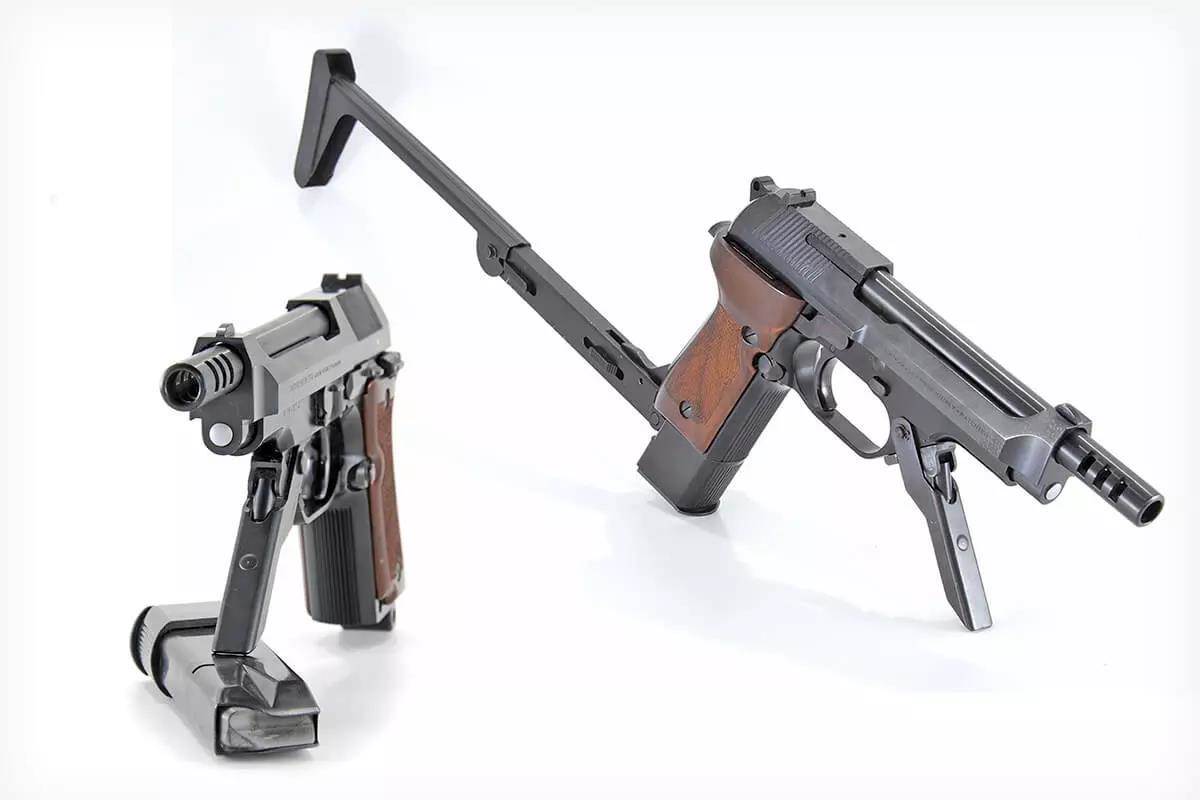
Truth be told, back in the day, the market wasn’t exactly awash with alternatives for those who sought a holsterable full-automatic firearm for short-range offensive or defensive: the best available examples of that category were all manufactured in the Eastern Bloc, and were respectively the Czechoslovak Vz.61 Škorpion in .32 ACP and the Polish PM.63 RAK in 9x18mm PM, which by itself says a lot. The closest thing available in the west were the Ingram M-10 and M-11 SMGs (aka MAC-10 and MAC-11), whose controllability without its proprietary SIONICS sound suppressor is well known and dreaded by most (and whose market viability was severely hindered by the US Department of State, and by the well-known corporate woes of the various manufacturing companies that succeeded one another).
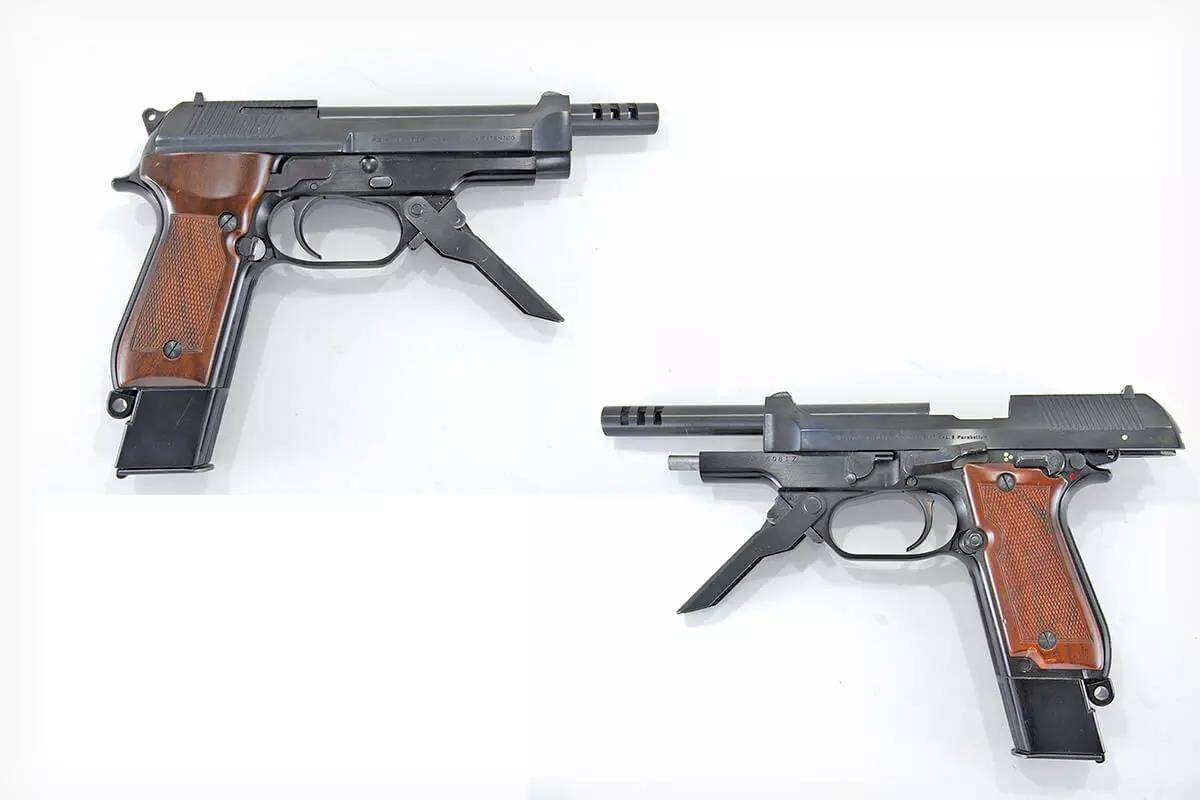
It would take decades for more suitable, compact or subcompact 9mm PDWs such as the Micro-UZI, the MP5K or the Steyr TMP (now B&T MP9) to appear. Beretta decided to tackle the issue head-on by the end of the 1970s, engineering a completely new machine-pistol from the ground-up. By that time, the interest for a compact, portable select-fire weapon by law enforcement and special task units was witnessing a resurgence, particularly in Europe, where the historical season of international and political terrorism known as the “Years of Lead” was at its peak, with Italy taking the brunt of it.
It’s the Not-So-Little Differences…
Chambered in 9mm Luger, the Beretta 93R can be seen as a beefed-up version of the Beretta 92 series, also known in US service as the M9, and indeed that’s not really far from the truth, at least in part. Unlike the M92, the Beretta 93R is a single-action only (SAO) pistol, built on a machined 7075-T6 aluminum alloy frame and a machined steel slide. Despite being based on the same falling block locking system as the Beretta 92 series, almost no component of the Beretta 93R is interchangeable with the M92 and its variants, with the exception of the magazines, some small parts (magazine catch, takedown pin, extractor) and most notably, the 6.1-inch long, compensated barrel.
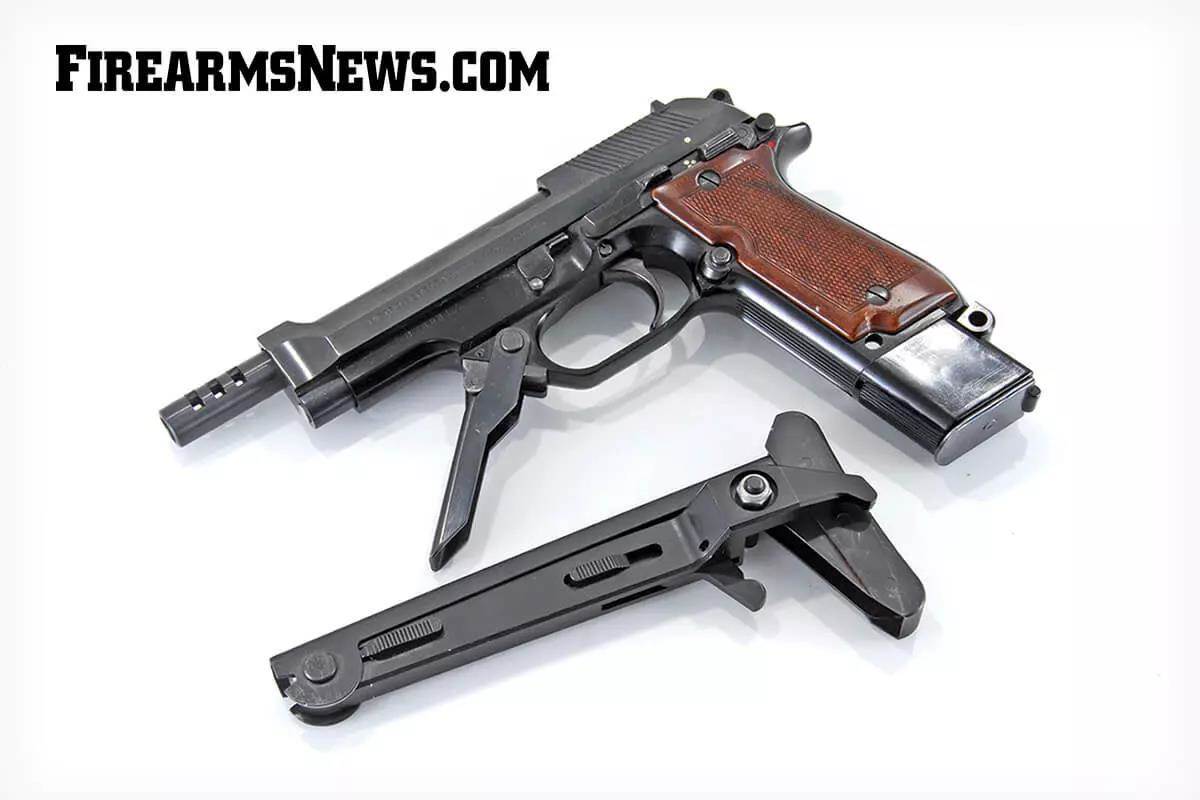
The Beretta 93R doesn’t feature the automatic striker safety found on the M92 variants, and the only manual safety consists in a small notch located on the frame, at thumb reach, right behind the fire selector lever that allows semi-automatic or three-round burst fire. Aside from its quintessential looks, the sear and trigger system are signature features of the Beretta 93R; the Italian company went for quite a convoluted and complex mechanism, located within the grip, just under the right panel, to limit the operation to three-rounds burst and make the gun more controllable, accurate, and effective on target, even in the hands of operators with limited training.
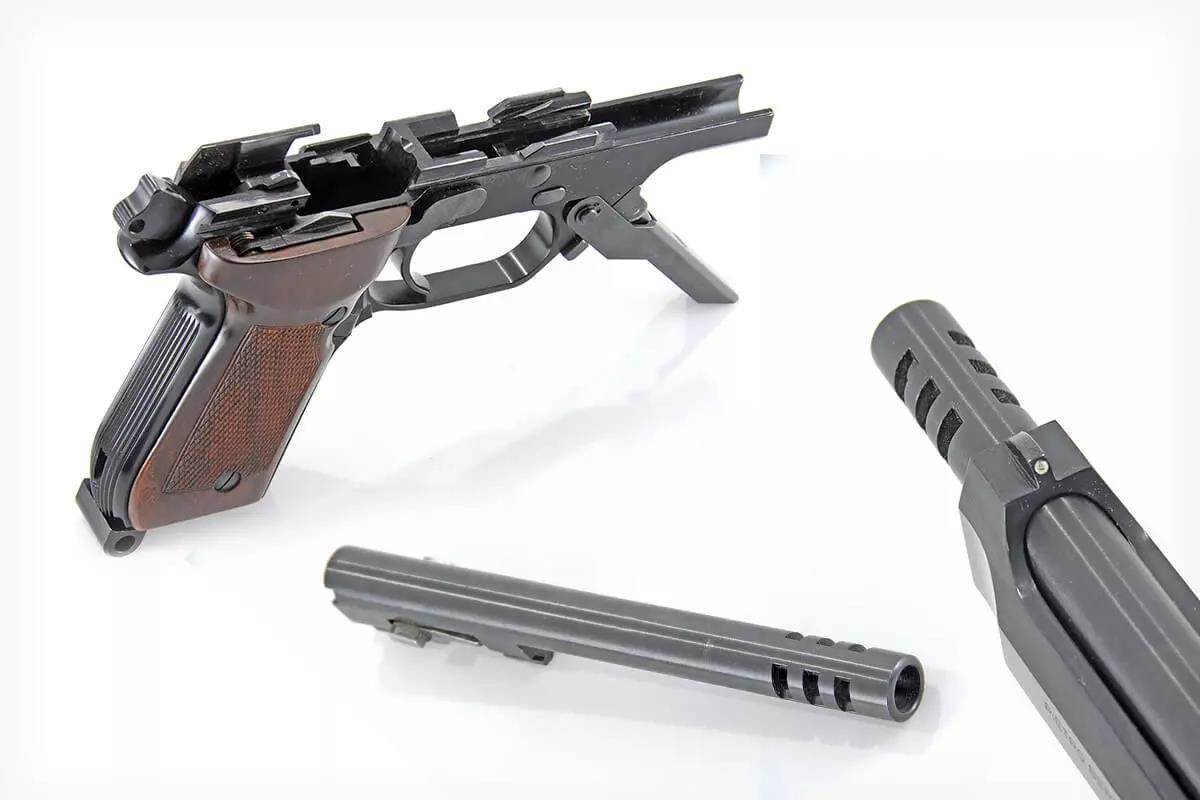
The three-round burst system is activated by the movement of the slide as the gun cycles and is based on a ratchet mechanism and a spring-operated rack whose operation is very similar to that of the three-rounds burst ratchet that would be implemented by Colt Mfg. on the M16-A2 assault rifle years later. In the case of the Beretta 93R, the ratchet moves with every shot until it reaches the end of travel, by which point it allows a round to be chambered and the hammer to be cocked but activates a disconnector that forces the shooter to reset the system by releasing the trigger before firing again. The difference between the Beretta 93R burst limiter and the M16A2 system is that on the Beretta 93, releasing the trigger will always automatically reset the system, so that should the operator manage to squeeze off just two rounds out of a three-rounds burst, after releasing the trigger he (or she) will once again have a three-rounds burst available. The nominal cyclic rate of the Beretta 93R was listed at 700 rounds per minute, but the real rate of fire in three-rounds burst is closer to 1,100 RPM.
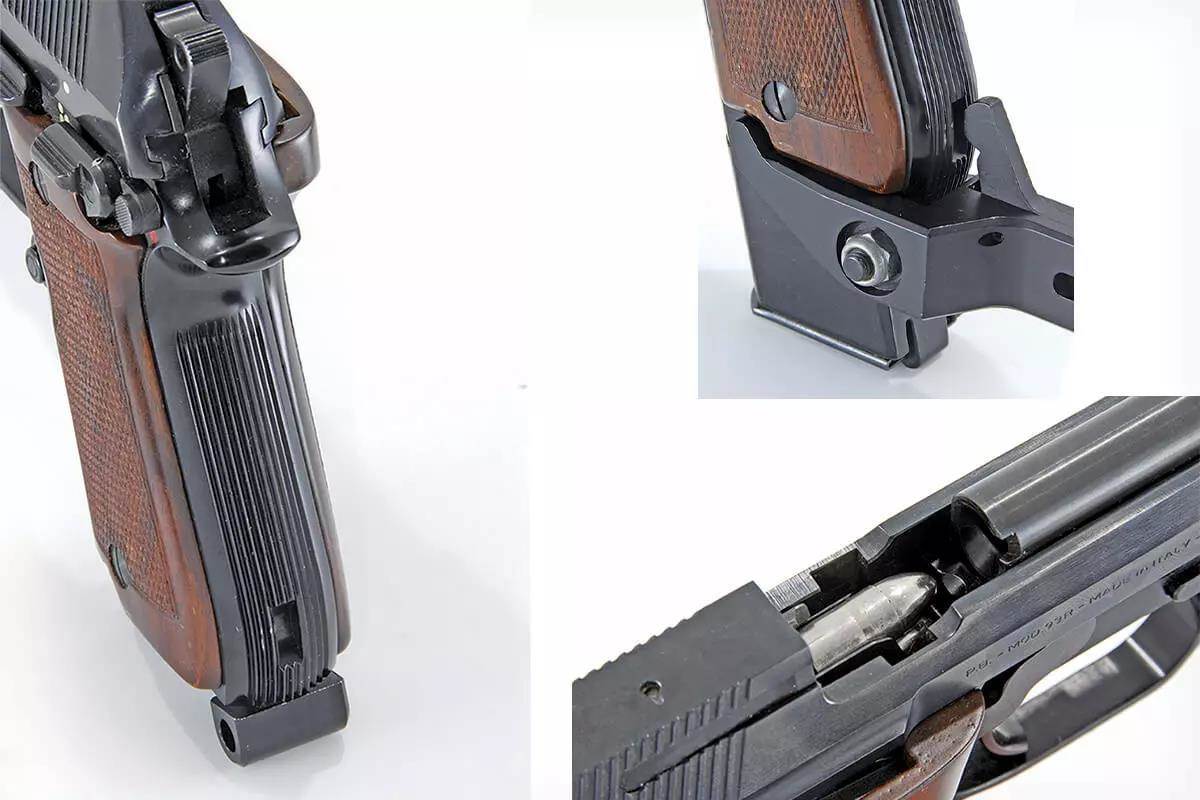
The three-rounds burst limitation, combined with the large porting on the barrel and the increased mass of the slide and frame compared to the Beretta M92, makes the Beretta 93R significantly more controllable in burst fire compared to other automatic pistols that came before it, and most of those that came later. For additional controllability, Beretta provided the 93R with a metal angled foregrip that pivots in front of the trigger guard and can be folded up against the dust cover, and with a separate, collapsible metal buttstock that can be attached to a slot at the heel of the grip and to the lanyard loop. The idea was that a law enforcement officer, without immediate access to a long gun, such as motorcycle officers, beat cops, plainclothes officers, and the like, could carry a Beretta 93R in a normal holster and the stock in a separate pouch, and use the gun normally as a semi-automatic pistol in most situations or convert it to a shoulder-fired, burst-capable weapon should the need arise. Likewise, for special task units and military operators, the Beretta 93R would provide superior close-quarters effectiveness over a standard sidearm for those who could not carry a combat rifle, a sub-machine gun, or a carbine.
Too Little, Too Late?
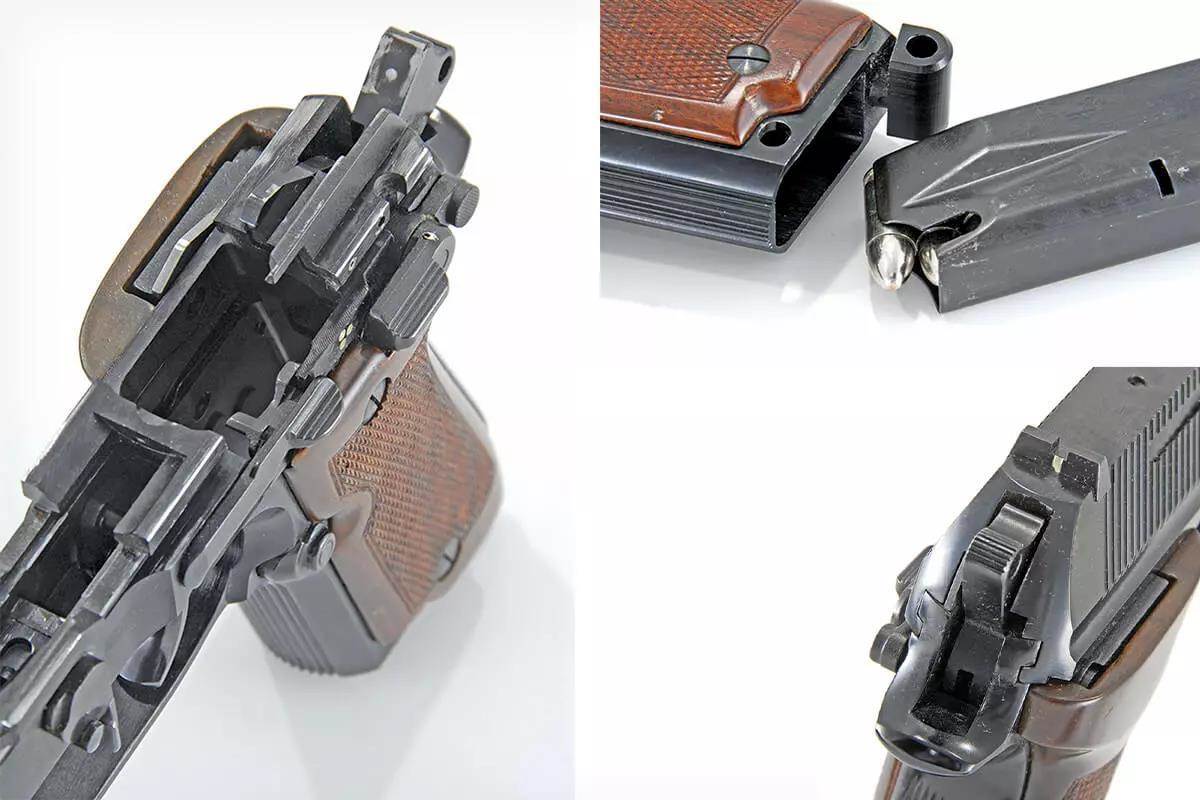
With its three-round burst, good capacity, shoulderability, and longer barrel, the Beretta 93R was probably the best of the select-fire pistols of the second half of the 20th Century. Accessories such as threaded barrels for a proprietary sound suppressor were also offered, but unfortunately the 93R was launched too close to the dawn of modern Personal Defense Weapons (PDWs) to make a true difference, and the mechanical complexity and overall high cost of the system didn’t help it achieve the market success it would have deserved. Thirty years after having been phased out of production, with less than 5,000 samples ever produced, most of them were procured by the Italian military and Italian law enforcement agencies, some exported to government customers in Africa and South America, and only a handful ending up in the United States and elsewhere.
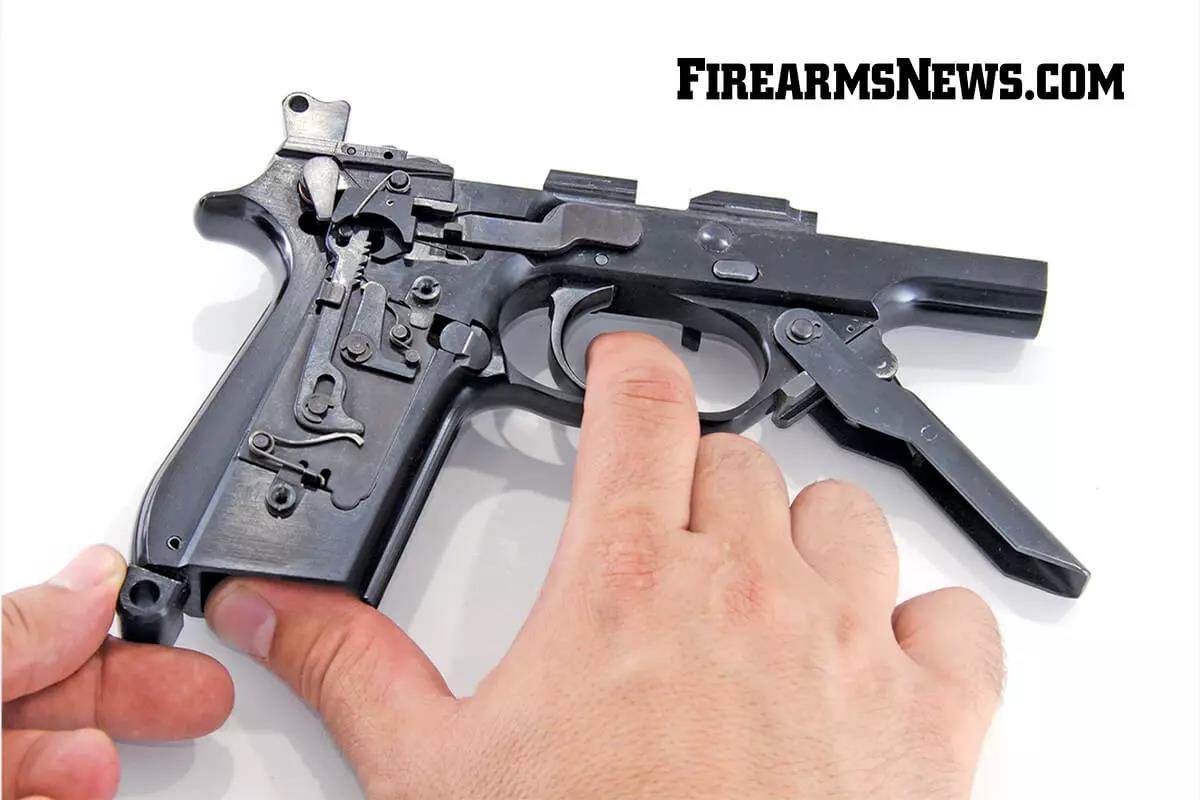
In 2006, Firearms News Editor-in-Chief, Vincent L. DeNiro was the tactical product manager and pistol marketing manager for Beretta USA (before becoming founder and head of international sales for the US operation). In this year, he proposed semi-auto versions of the 93R; an AOW (any other weapon) which would incorporate the folding grip with no stock, a carbine version with 16-inch barrel, and a short-barreled rifle (SBR) which would basically be the 93R in semi-auto. For a few months into 2007, the concept was entertained by the US division as well as Beretta Italy. However, when the defense division of Beretta Italy could not locate the original tooling, the project was halted. The Beretta 93R still enjoys cult status among gun enthusiasts worldwide, due to its appearances in countless works of entertainment, from movies to TV shows all the way to videogames. A product of its time, the Beretta 93R would have probably been more successful had it been launched a decade earlier. C’est la vie.
Recommended
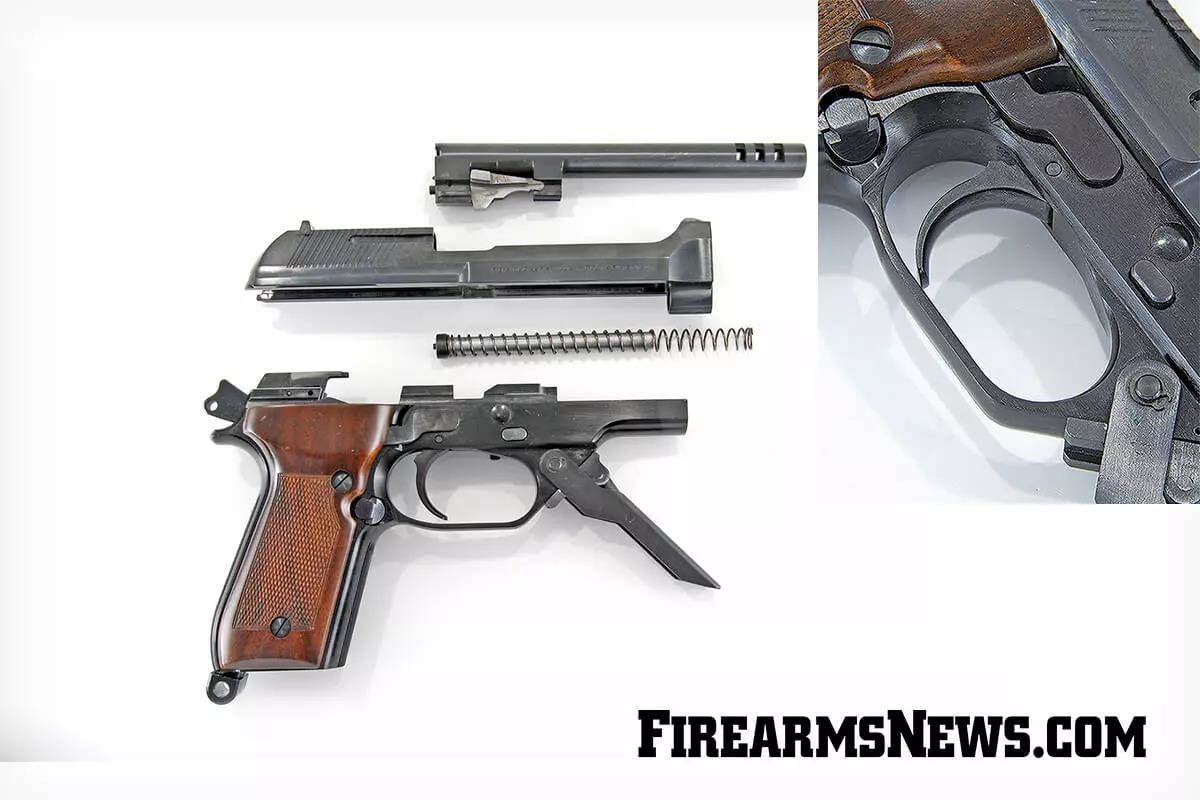
Read the full article here


